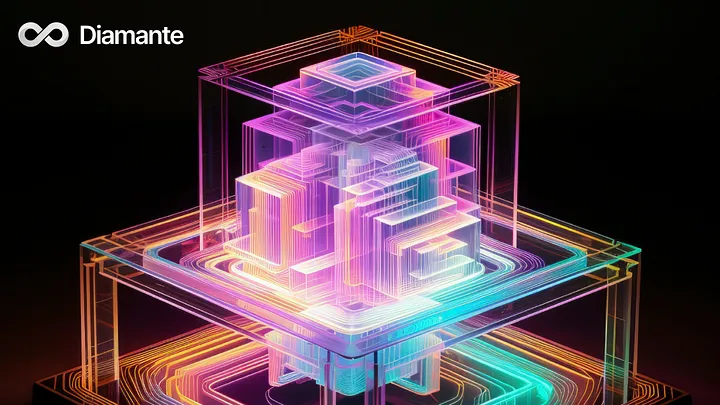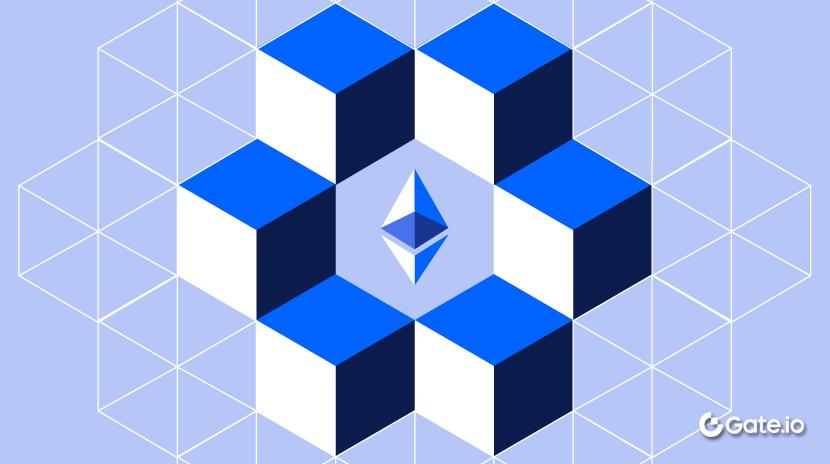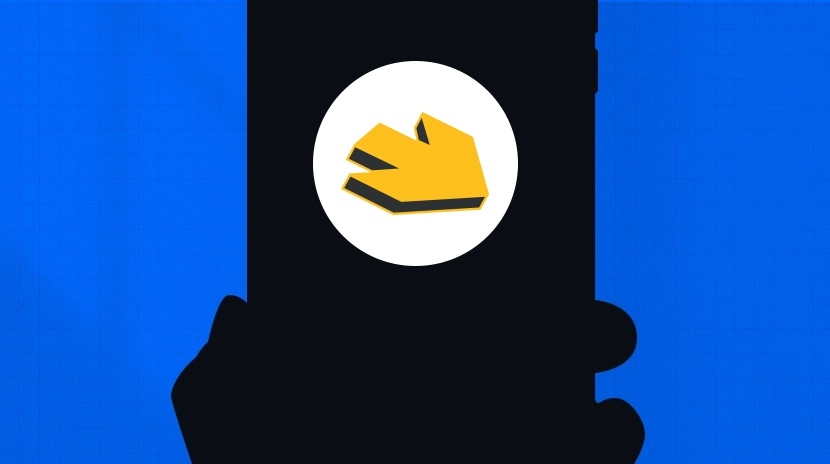Comprender Diamante: Una cadena de bloques híbrida de capa 1 con consenso de múltiples capas y resistencia cuántica
Ante el avance rápido de la computación cuántica, la industria criptográfica tradicional se enfrenta a amenazas sin precedentes, especialmente después del debut del nuevo chip cuántico de Google, Willow, el año pasado, que envió ondas de choque a toda la comunidad cripto. Aunque la opinión general sugiere que los ataques cuánticos a gran escala aún pueden estar a 10 o 20 años de distancia, la presión inminente ha llevado a la industria a buscar continuamente actualizaciones tecnológicas y colaboraciones en el ecosistema para abordar los riesgos potenciales.
Diamante surge como respuesta a la creciente demanda de soluciones de cadena de bloques seguras y escalables en la era de la computación cuántica. Diamante asegura una resiliencia a largo plazo mediante la integración de tecnologías criptográficas resistentes a la computación cuántica, como las firmas digitales Dilithium y la encapsulación de claves Kyber. Además, aprovecha un modelo de consenso de tres capas que consta de DeleGate.comd Prueba de Participación (DPoS), Prueba de Historia (PoH) y Tolerancia Asincrónica a Fallas Bizantinas (aBFT) para construir un ecosistema seguro, eficiente y altamente adaptable que permite a los desarrolladores crear una amplia gama de aplicaciones descentralizadas fácilmente.
Este artículo examinará el proyecto Diamante en profundidad, cubriendo áreas clave como el historial del equipo, la arquitectura técnica, productos emblemáticos, desarrollo del ecosistema y el modelo económico centrado en $DIAM. Ofrecerá a los lectores una comprensión integral del potencial de crecimiento del proyecto y los desafíos que enfrenta.
¿Qué es Diamante?
Diamante es una cadena de bloques híbrida de capa 1 que ofrece un conjunto completo de herramientas de desarrollo. Estas herramientas permiten a los desarrolladores implementar de forma transparente DApps y aplicaciones institucionales en una amplia gama de sectores, incluyendo DeFi, NFT, juegos, emisión de activos, gestión de la cadena de suministro y atención médica.

Fuente: diam-io.medium.com
Para mejorar el rendimiento de la red y la compatibilidad entre cadenas, una de las características destacadas de Diamante es su adopción de un mecanismo de consenso de tres capas: DPoS (Prueba de participación DeleGate.comd), PoH (Prueba de Historia) y aBFT (Tolerancia a Fallas Bizantinas asincrónica). Esta arquitectura permite que la red procese hasta 100,000 transacciones por segundo (TPS), con liquidaciones en tiempo real que ocurren en 1 a 4 segundos. Además, Diamante incorpora algoritmos resistentes a la computación cuántica, como firmas digitales Dilithium y encapsulación de clave Kyber, para aumentar la seguridad y la resistencia de la red.
Diamante tiene como objetivo democratizar la economía digital, enfatizando significativamente el desarrollo de aplicaciones del ecosistema. El equipo ha desarrollado de forma independiente varios productos principales, incluida la aplicación de pago PayCircle y las herramientas financieras de CreditCircle. Además, Diamante apoya activamente la innovación a través de hackatones globales y proporciona financiamiento, recursos técnicos y apoyo de infraestructura para proyectos con alto potencial.
El token nativo $DIAM sirve como piedra angular del ecosistema Diamante. Con un suministro total de 10 mil millones de tokens, opera en las redes Diamante y BNB Chain. $DIAM juega un papel crucial dentro del ecosistema, facilitando transacciones, permitiendo gobernanza y otorgando acceso a varios productos y servicios.
Antecedentes del equipo y financiamiento
Según la plataforma de financiación colectiva en línea Wefunder, Diamante fue fundada en 2018 y recaudó $1.3 millones en febrero de 2022 a través de Wefunder y otros inversores ángel.
El proyecto fue cofundado por Dinesh Patel y Chirag Jetani, ambos provenientes de familias con historias profundamente arraigadas en el comercio de piedras preciosas y joyas. Dinesh Patel aporta más de 25 años de experiencia en el comercio de diamantes en los principales mercados globales, incluidos Mumbai, Israel, Bélgica y Estados Unidos, y también es el fundador de Honey Star Inc. Chirag Jetani, además de gestionar negocios de diamantes, es un ingeniero experimentado con una amplia experiencia técnica. Otros miembros clave del equipo también tienen sólidos antecedentes en finanzas y blockchain; por ejemplo, el Asesor Financiero Principal Erik Jens trabajó anteriormente en instituciones financieras globales como ABN AMRO Bank.
Diamante ha anunciado una serie de asociaciones estratégicas en los últimos años para promover aún más la adopción de la cadena de bloques. Colaboradores destacados incluyen la Oficina Privada de Su Alteza el Jeque Mohamed Bin Ahmed Bin Hamadan Al Nahyan de Abu Dhabi, así como AWS, Azure, India Bank Digital Infrastructure Company (IBDIC), QuillAudits, TransBnk, Credshield, Binamite y HyperSign.
Arquitectura Técnica de Diamante
La arquitectura del sistema Diamante comprende cuatro capas: la capa de aplicación, la capa de consenso, la capa de datos y la capa de contratos inteligentes. Utiliza criptografía resistente a los cuánticos, un mecanismo de consenso híbrido y una arquitectura modular para construir una red blockchain segura y de alto rendimiento. Su pila tecnológica central incluye los siguientes componentes:

Fuente: diamante.gitbook.io
1) Mecanismo de consenso de múltiples capas
Diamante utiliza un algoritmo de consenso de tres capas para garantizar que la red pueda procesar un alto volumen de transacciones de manera rápida y segura:
- DeleGate.comd Prueba de Participación (DPoS): Esta es la primera capa de consenso, diseñada para una creación rápida de bloques. Se enfatiza en un alto rendimiento y en una gobernanza impulsada por validadores.
- Tolerancia a fallos bizantinos asincrónica (aBFT): Sirviendo como la segunda capa de consenso, aBFT garantiza la finalidad y seguridad, incluso en casos en los que algunos nodos se comporten maliciosamente o se desconecten, manteniendo así la integridad general de la red.
- Prueba de Historia (PoH): La tercera capa, PoH, optimiza el orden de las transacciones sin confianza, mejorando significativamente la eficiencia del consenso y reduciendo la latencia de la red.
Al combinar estos tres protocolos de consenso, Diamante tiene como objetivo ofrecer la seguridad de Bitcoin, la usabilidad de Ethereum y la velocidad de Solana, buscando un nivel superior de seguridad, escalabilidad y compatibilidad entre cadenas. Además, Diamante integra Sync Bridge y la Cadena Binance Greenfield, lo que permite una interoperabilidad fluida y liquidez entre múltiples redes.
2) Libro mayor distribuido de CouchDB
Diamante mejora la escalabilidad y eficiencia de la red al integrar CouchDB en su arquitectura. Almacena datos en formato JSON, ofreciendo alta flexibilidad y admite control de concurrencia de múltiples versiones (MVCC) y APIs de HTTP, lo que lo hace amigable para los desarrolladores y fácil de integrar.
El diseño ligero de CouchDB y su sincronización eficiente lo hacen ideal para dispositivos móviles. Admite operaciones sin conexión para nodos móviles y les permite sincronizar fácilmente los datos al volver a conectarse, una ventaja que extiende la accesibilidad de Diamante a una gama más amplia de dispositivos y usuarios.
3) Algoritmos Resistentes a la Computación Cuántica
Para hacer frente a la inminente amenaza de la computación cuántica, Diamante incorpora dos algoritmos criptográficos poscuánticos—Dilithium y Kyber—garantizando una computación eficiente y una baja sobrecarga de comunicación en aplicaciones como la comunicación de red y la verificación de identidad.
Dilithium es un algoritmo de firma digital. En comparación con otros esquemas de firma poscuántica, ofrece tamaños de clave y firma más pequeños, garantizando un alto rendimiento al mismo tiempo que admite múltiples niveles de seguridad para implementaciones flexibles. Y Kyber es un mecanismo de encapsulación de clave (KEM) que sobresale en generación de clave, encapsulación, desencapsulación e intercambio seguro de clave. Es muy valorado por su sólida seguridad, eficiencia y compatibilidad.
Desarrollo del Ecosistema Diamante
Diamante se compromete a permitir la integración perfecta entre las redes de cadenas de bloques y las infraestructuras financieras existentes. Para lograr esto, el equipo ha desarrollado de forma independiente varios productos para proporcionar a los usuarios un acceso intuitivo y eficiente al ecosistema.
- DIAM Wallet: Disponible en iOS, Android y como una extensión del navegador, la billetera permite a los usuarios enviar, recibir y almacenar de forma segura varias criptomonedas.
- PayCircle: Una aplicación de pago DeFi construida para empresas globales e individuos, que admite transacciones instantáneas tanto en moneda fiduciaria como en criptomonedas. PayCircle emplea una variedad de medidas de seguridad avanzadas, que incluyen cifrado AES-256, autenticación multifactor (MFA) y algoritmos de detección de fraudes impulsados por IA. Además, pone un fuerte énfasis en el cumplimiento, adhiriéndose a estándares internacionales como PCI-DSS y regulaciones de privacidad de datos como el GDPR.
- CreditCircle: Un producto financiero DeFi que ofrece préstamos y servicios de crédito a individuos y empresas a tasas de interés competitivas. CreditCircle proporciona opciones de financiamiento flexibles basadas en calificaciones crediticias, lo que permite a los usuarios garantizar activos como acciones, bonos, bienes de lujo y activos digitales.
- MudraCircle: Una solución centrada en las monedas digitales de los bancos centrales (CBDC), que ofrece herramientas e infraestructura adaptadas para sistemas monetarios digitales.
- MetaCircle: Una economía virtual integral donde los usuarios pueden acceder a servicios utilizando $DIAM, incluyendo banca virtual, bienes raíces virtuales y experiencias de metaverso.
- ChainCRM y NodeHRM: Al igual que plataformas como Hyperledger Fabric, Diamante también ofrece servicios de cadena de bloques privada adaptados a las necesidades empresariales. ChainCRM es una plataforma de gestión de relaciones con los clientes basada en cadena de bloques que realiza un seguimiento de las ventas y las interacciones con los clientes, ofreciendo análisis en tiempo real, perspectivas predictivas y automatización. NodeHRM es un sistema de gestión de recursos humanos impulsado por la cadena de bloques que transforma el reclutamiento, la integración y la gestión del rendimiento para mejorar la eficiencia operativa.
Además de los productos mencionados anteriormente, Diamante continúa expandiendo su ecosistema con planes de lanzar más herramientas y servicios adaptados a varios grupos de usuarios en un futuro cercano. Para acelerar el crecimiento del ecosistema, el equipo está impulsando activamente la innovación a través de hackathons, programas de subvenciones y la ampliación de asociaciones estratégicas.
Según su sitio web oficial, más de 120 aplicaciones se han unido al ecosistema Diamante, abarcando infraestructura, NFT, DeFi, juegos, plataformas sociales y DePIN. Algunos de estos proyectos del ecosistema se ilustran a continuación:

Fuente: diam-io.medium.com
Modelo Económico Centrado en $DIAM
Dentro del ecosistema Diamante, $DIAM es el token central, que funciona como un activo de gobernanza y utilidad. Con un suministro total de 10 mil millones de tokens, $DIAM se circula en las redes Diamante y BNB Chain.
Según la información oficial, $DIAM se asigna según las siguientes ratios de distribución:

Sin embargo, el equipo no ha revelado información más detallada, como el cronograma de lanzamiento del token o los plazos de consolidación. En cuanto a los beneficios actuales de poseer $DIAM, principalmente incluyen:
- Acceso a Productos y Servicios de la Plataforma: Los usuarios pueden utilizar $DIAM para transacciones dentro del ecosistema, como realizar pagos a través de PayCircle.
- Gobernanza del Ecosistema: Los titulares pueden participar en la gobernanza apostando $DIAM, obteniendo el derecho a presentar propuestas, votar, y etc.
- Recompensas de staking: Los titulares de tokens pueden participar en actividades de dStake, apoyando el staking cruzado de activos para ganar incentivos.
También vale la pena señalar que $DIAM sigue un modelo deflacionario. Por cada transacción dentro del ecosistema de Diamante, una cantidad determinada programáticamente de $DIAM se quema permanentemente, contribuyendo a su escasez a largo plazo.
Perspectivas futuras y desafíos
Actualmente, el equipo de Diamante está actualizando activamente su red, perfeccionando productos y colaborando con socios para expandir su ecosistema de aplicaciones. Para llegar a una base de usuarios más amplia, el equipo está organizando eventos offline en varios países y regiones, incluyendo Vietnam, Estambul, Medio Oriente, Singapur y Tokio, para construir una comunidad global diversa y mejorar la visibilidad en el mercado.
Diamante continuará profundizando la colaboración con desarrolladores de primer nivel, equipos de proyectos y empresas. Al crear casos de uso del mundo real para $DIAM, la plataforma tiene como objetivo aumentar aún más su valor y acelerar la adopción a gran escala de la cadena de bloques de Diamante. Además, Diamante se centra en integrar tecnologías emergentes como IA, IoT y el Metaverso en sus soluciones de cadena de bloques para impulsar la innovación en el cuidado de la salud, las finanzas y la gestión de la cadena de suministro.
Dicho esto, el equipo debe abordar de manera proactiva y flexible varios desafíos potenciales, incluyendo:
- Uno de los objetivos principales de Diamante es resistir las amenazas planteadas por la computación cuántica. El equipo debe garantizar un desarrollo técnico proyectado al futuro integrando continuamente los últimos algoritmos resistentes a la computación cuántica a través de asociaciones y pruebas regulares de penetración para evaluar la seguridad de la red. Por ejemplo, Dilithium, uno de los principales candidatos en el Proceso de Estandarización de la Criptografía Post-Cuántica del NIST, ha ingresado a su cuarta ronda de evaluación y continúa evolucionando a través de actualizaciones iterativas.
- Mientras Diamante afirma tener una capacidad teórica de 100,000 TPS, los datos de su explorador de bloques muestran actualmente una velocidad de transacción promedio de 5.62 TPS, lo que destaca una brecha significativa en el rendimiento. El equipo necesita incentivar una mayor participación de los usuarios y las aplicaciones del ecosistema, así como llevar a cabo pruebas de estrés continuas para garantizar la escalabilidad y el rendimiento en el mundo real.
- Hasta ahora, se han creado más de 1,72 millones de billeteras en la red Diamante, y el número de aplicaciones del ecosistema sigue creciendo. Sin embargo, la actividad y la influencia general del ecosistema siguen siendo limitadas, lo que requiere mayores esfuerzos en marketing, construcción de comunidad y apoyo a escenarios de aplicación innovadores.
- Como jugador profundamente arraigado en aplicaciones financieras, Diamante debe continuar mejorando en privacidad de datos, cumplimiento normativo e interoperabilidad entre cadenas para cumplir con las expectativas de usuarios empresariales e institucionales.
Conclusión
Como una cadena de bloques híbrida de Capa-1, Diamante introduce una arquitectura de consenso multi-capa innovadora e integra algoritmos como Dilithium y Kyber para mejorar la seguridad, flexibilidad y resistencia de la red, reflejando un notable grado de innovación. Al mismo tiempo, el equipo está expandiendo activamente su ecosistema ofreciendo un soporte integral a los desarrolladores y fomentando la creación de aplicaciones descentralizadas.
Sin embargo, a medida que el ecosistema se expande gradualmente, la creciente complejidad del sistema Diamante exige mayores esfuerzos en la educación del mercado y la capacitación de usuarios. Más importante aún, el equipo debe seguir potenciando el token $DIAM mediante la introducción de más escenarios de utilidad del mundo real para apoyar y fortalecer su valor a largo plazo.
Artículos relacionados

¿Qué es Tronscan y cómo puedes usarlo en 2025?

¿Cómo apostar ETH?

¿Qué es SegWit?

¿Qué es HyperGPT? Todo lo que necesitas saber sobre HGPT

¿Qué es la Billetera HOT en Telegram?


